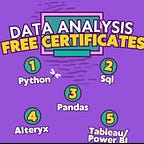Excel Learning Series Part-13
Complete Excel Topics for Data Analysis: https://t.me/sqlspecialist/547
Today, let's learn about Macros and Automation:
1. Recording and Running Macros: Macros are sequences of actions that you can record to automate repetitive tasks in Excel. You can record a macro by performing the desired actions manually, and Excel will generate VBA (Visual Basic for Applications) code to replicate those actions. Once recorded, you can run the macro to repeat the same series of actions automatically.
2. Automation with VBA (Visual Basic for Applications): VBA is a programming language that allows you to create custom macros and automate tasks in Excel. With VBA, you can write scripts to perform complex calculations, manipulate data, create custom functions, interact with external databases, and much more. VBA opens up a wide range of possibilities for automating tasks and extending Excel's functionality beyond its built-in features.
For example:
- You can record a macro to automate the process of formatting and organizing data in a specific way. This could include tasks such as applying cell styles, sorting data, and generating summary reports.
- With VBA, you can create custom macros to automate repetitive tasks such as data cleaning, report generation, and data analysis. For instance, you could write a VBA script to automatically import data from external sources, perform calculations, and generate visualizations based on specific criteria.
Macros and automation help streamline workflows, increase productivity, and reduce errors by eliminating manual repetitive tasks.
Share with credits: https://t.me/sqlspecialist
Like for more such content 👍❤️
Hope it helps :)
